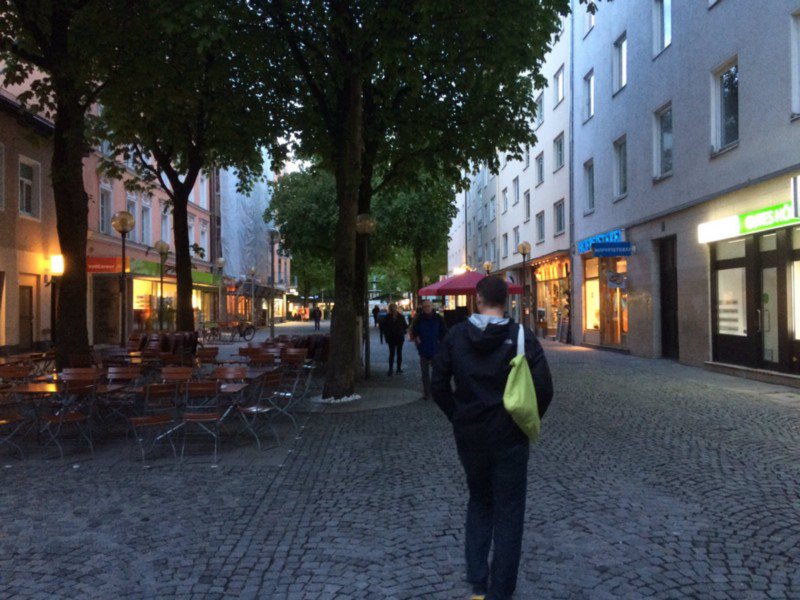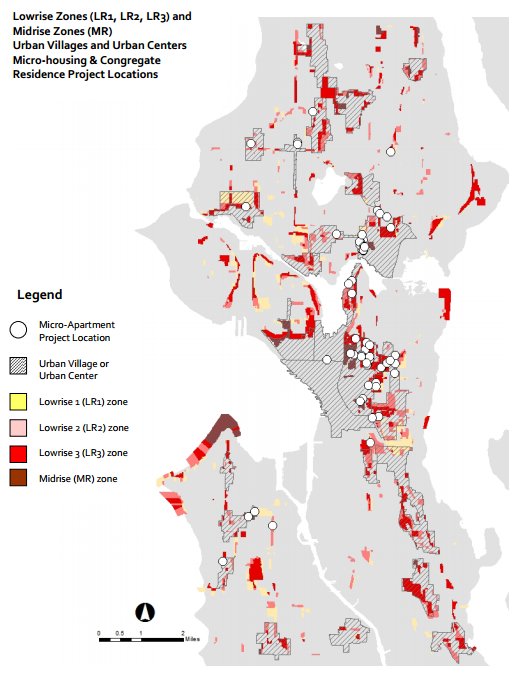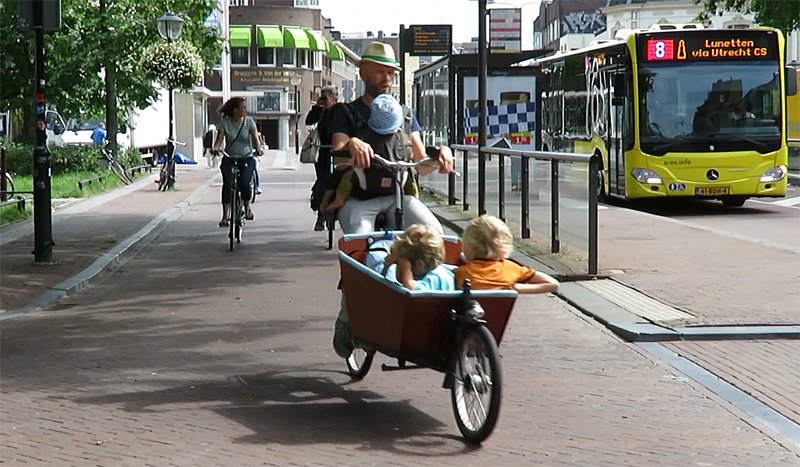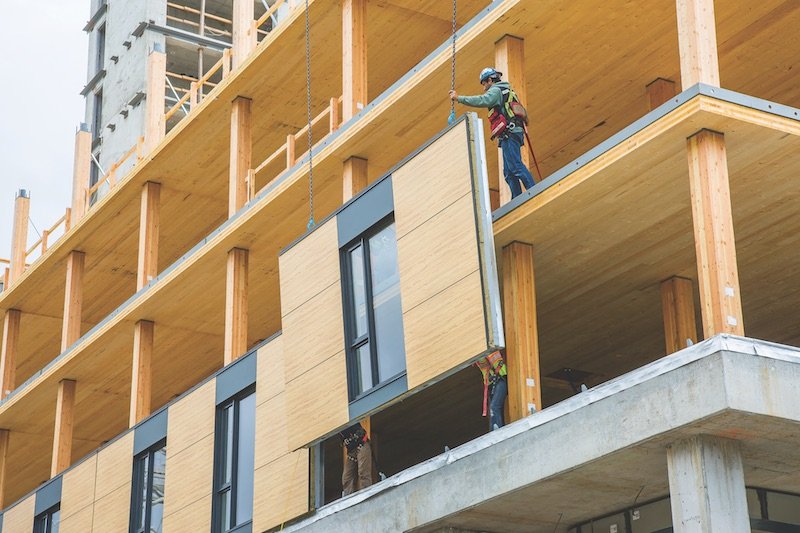this photo accurately describes mayor durkan& #39;s no good horrible very bad climate [in]action plan
https://medium.com/@15kwhm2a/is-seattles-climate-action-plan-a-plan-of-inaction-80e31108222c">https://medium.com/@15kwhm2a...
https://medium.com/@15kwhm2a/is-seattles-climate-action-plan-a-plan-of-inaction-80e31108222c">https://medium.com/@15kwhm2a...
durkan& #39;s climate policy is one of inaction (almost nothing on green mobility, land use), gentrification (car chargers), coopting public land for private use (car chargers), and a handful of green buildings - when we need a marshall plan for energetic retrofits and densification
despite claims that seattle is a leader on this front - we& #39;re really not. green mobility takes a back seat to car infrastructure. intensification of new housing is illegal in 85% of the city. if we didn& #39;t get our power largely from hydro, our CO2 footprints would be even larger
today, as regional politicians celebrate the viaduct replacement - a cathedral to climate arson, sprawl, waste, and anti-democratic rule - virtually no one asked if this was the right thing to do. our former bike mayor did: https://twitter.com/mayormcginn/status/1091783084276572160">https://twitter.com/mayormcgi...
the $4 billion dollar tunnel was a gift to the corporation that built it, and no one else.
how much social housing could we build for $4 billion?
roughly 14,000 units.
what is the multiplier for thousands of construction jobs, and affordable homes in the city?
how much social housing could we build for $4 billion?
roughly 14,000 units.
what is the multiplier for thousands of construction jobs, and affordable homes in the city?
the french are building tramway systems for $50m a mile.
how much easier would it be to move around in a seattle w/ 80 miles of tramway unencumbered by cars? https://www.sudouest.fr/2016/01/04/bordeaux-voici-le-trace-de-la-ligne-d-du-tramway-2233250-2780.php">https://www.sudouest.fr/2016/01/0...
how much easier would it be to move around in a seattle w/ 80 miles of tramway unencumbered by cars? https://www.sudouest.fr/2016/01/04/bordeaux-voici-le-trace-de-la-ligne-d-du-tramway-2233250-2780.php">https://www.sudouest.fr/2016/01/0...
the traffic apocalypse that was predicted with viadoom largely was absent.
what if we had used this $4B for a green marshall plan in seattle? we could have had a major impact on addressing climate goals and futureproofing out city.
what if we still could?
what if we had used this $4B for a green marshall plan in seattle? we could have had a major impact on addressing climate goals and futureproofing out city.
what if we still could?
start with the low hanging fruit.
immediate parking caps.
every single development that adds off-street parking results in on-street parking be returned to public sphere: bus lanes, bike lanes, parklets, and plazas. just like zuerich https://vimeo.com/108884155 ">https://vimeo.com/108884155...
immediate parking caps.
every single development that adds off-street parking results in on-street parking be returned to public sphere: bus lanes, bike lanes, parklets, and plazas. just like zuerich https://vimeo.com/108884155 ">https://vimeo.com/108884155...
build and connect the basic bike network.
at a minimum at least for downtown.
full cost of the basic bike network buildout would have been a fraction of the viaduct replacement tunnel - and would see more users.
as we saw during viadoom, biking works https://usa.streetsblog.org/2019/01/17/biking-is-rising-fast-in-seattle-during-highway-closure/">https://usa.streetsblog.org/2019/01/1...
at a minimum at least for downtown.
full cost of the basic bike network buildout would have been a fraction of the viaduct replacement tunnel - and would see more users.
as we saw during viadoom, biking works https://usa.streetsblog.org/2019/01/17/biking-is-rising-fast-in-seattle-during-highway-closure/">https://usa.streetsblog.org/2019/01/1...
we should be subsidizing the purchase of e-bikes and cargo bikes.
the city of oslo was offering subsidies up to $1200 for these. cargo bikes can work for families, logistics, and are way more fun to ride in than SUVs.
much greener, too. https://www.citylab.com/transportation/2017/01/oslo-norway-city-grant-for-electric-cargo-bikes/515100/?utm_source=SFTwitter">https://www.citylab.com/transport...
the city of oslo was offering subsidies up to $1200 for these. cargo bikes can work for families, logistics, and are way more fun to ride in than SUVs.
much greener, too. https://www.citylab.com/transportation/2017/01/oslo-norway-city-grant-for-electric-cargo-bikes/515100/?utm_source=SFTwitter">https://www.citylab.com/transport...
speaking of oslo - it& #39;s a city (like seattle) that gets cold in the winter, and also has hills.
norway has been planning a billion dollar bike infra program, much of it in and around oslo. where& #39;s a similar proposal from our & #39;climate action& #39; governor? https://www.citylab.com/transportation/2018/05/oslos-race-to-become-a-major-bike-haven/559358/">https://www.citylab.com/transport...
norway has been planning a billion dollar bike infra program, much of it in and around oslo. where& #39;s a similar proposal from our & #39;climate action& #39; governor? https://www.citylab.com/transportation/2018/05/oslos-race-to-become-a-major-bike-haven/559358/">https://www.citylab.com/transport...
oslo& #39;s bike plan is also ALEGRA AF
forget 8-80, their bike infrastructure is being planned for 3-93. much of the focus, as ours should be, is on school routes. the goal is for 90% of kids to bike/walk/bus to school by 2025.
http://www.trafikkagenten.no/en/articles/cycling-strategy-oslo-2015-2025/">https://www.trafikkagenten.no/en/articl...
forget 8-80, their bike infrastructure is being planned for 3-93. much of the focus, as ours should be, is on school routes. the goal is for 90% of kids to bike/walk/bus to school by 2025.
http://www.trafikkagenten.no/en/articles/cycling-strategy-oslo-2015-2025/">https://www.trafikkagenten.no/en/articl...
remember the wonderful smoke-filled month we had last summer?
and our fun days in winter that are so hazy and smog-filled, we have burn bans?
free transit should be an option on these days. https://www.cityartsmagazine.com/blowing-smoke/ ">https://www.cityartsmagazine.com/blowing-s...
and our fun days in winter that are so hazy and smog-filled, we have burn bans?
free transit should be an option on these days. https://www.cityartsmagazine.com/blowing-smoke/ ">https://www.cityartsmagazine.com/blowing-s...
speaking of free transit - i wonder how many years the $4 billion from the viaduct tunnel would have floated the cost of covering every transit trip.
(the answer is 5 years - KC metro& #39;s operating budget is ~$800m/year)
(the answer is 5 years - KC metro& #39;s operating budget is ~$800m/year)
because new housing is effectively illegal in 85% of the city, we& #39;re going to need a lot more open space and parks in our urban villages. the only way to get there? removing cars
and yes, even on arterials.
we need a radical rethink of open space https://medium.com/@15kwhm2a/is-it-time-for-a-radical-rethinking-of-open-space-in-seattle-2b7f6e3b3217">https://medium.com/@15kwhm2a...
and yes, even on arterials.
we need a radical rethink of open space https://medium.com/@15kwhm2a/is-it-time-for-a-radical-rethinking-of-open-space-in-seattle-2b7f6e3b3217">https://medium.com/@15kwhm2a...
removing cars from arterials, where much of our density is forced to exist, is a win on numerous fronts.
it reduces pollution exposure
it increases safety
it re-democratizes public space
it increases access to open space
it increases tree canopy
oh and it is livable AF
it reduces pollution exposure
it increases safety
it re-democratizes public space
it increases access to open space
it increases tree canopy
oh and it is livable AF
we need to prioritize curb space for logistics. no, not ride hailing apps that increase VMT and congestion - i mean bike logistics.
we& #39;ve already got UW and UPS experimenting w/ cargo bikes. we need sustainable alternatives for moving goods https://ec.europa.eu/energy/intelligent/projects/sites/iee-projects/files/projects/documents/cyclelogistics_brochure_en.pdf">https://ec.europa.eu/energy/in...
we& #39;ve already got UW and UPS experimenting w/ cargo bikes. we need sustainable alternatives for moving goods https://ec.europa.eu/energy/intelligent/projects/sites/iee-projects/files/projects/documents/cyclelogistics_brochure_en.pdf">https://ec.europa.eu/energy/in...
and we& #39;re going to need car-free streets. whole sections downtown, including pike place.
we& #39;ll need a lot of pedestrian zones. every neighborhood should have one.
and car calming. there& #39;s no reason for people to drive 40-50 mph on arterials. https://vimeo.com/13826541 ">https://vimeo.com/13826541&...
we& #39;ll need a lot of pedestrian zones. every neighborhood should have one.
and car calming. there& #39;s no reason for people to drive 40-50 mph on arterials. https://vimeo.com/13826541 ">https://vimeo.com/13826541&...
oslo& #39;s got a plan to drastically reduce cars from a large chunk of the inner city.
we will need a plan as well. as new development downtown continues to add parking underground, the congestion issue will only get worse. https://www.oslo.kommune.no/english/politics-and-administration/green-oslo/best-practices/car-free-city/">https://www.oslo.kommune.no/english/p...
we will need a plan as well. as new development downtown continues to add parking underground, the congestion issue will only get worse. https://www.oslo.kommune.no/english/politics-and-administration/green-oslo/best-practices/car-free-city/">https://www.oslo.kommune.no/english/p...
we& #39;ll need a plethora of low energy buildings. the city of brussels went from having some of the worst energy codes in the world, to having one of the largest uptakes in passivhaus development. we have no plan, no incentives, for broad adaptation like this https://passivehouseplus.ie/magazine/insight/how-brussels-went-passive">https://passivehouseplus.ie/magazine/...
we will also need subsidies and incentives for energetic retrofits of existing buildings, many of which have little to no insulation.
the benefits of this are also multiple - less mold, healthier residents and workers, buoy against energy poverty, reduced maintenance costs
the benefits of this are also multiple - less mold, healthier residents and workers, buoy against energy poverty, reduced maintenance costs
the KfW bank in germany offers very low interest rate loans for the rehab of existing residences (yes, even multifamily), or the construction of passivhaus projects.
perhaps if we had... a public bank - we could do this as well.
perhaps if we had... a public bank - we could do this as well.
they also have grants and subsidies for commercial projects that fund low energy rehabs with: 3pane windows, insulation, ventilation w/ heat recovery, shading, building automation, and lighting.
http://www.kfw.de/inlandsfoerderung/Unternehmen/Energie-Umwelt/F%25C3%25B6rderprodukte/EE-Bauen-und-Sanieren-Unternehmen-276-277-278">https://www.kfw.de/inlandsfo...
http://www.kfw.de/inlandsfoerderung/Unternehmen/Energie-Umwelt/F%25C3%25B6rderprodukte/EE-Bauen-und-Sanieren-Unternehmen-276-277-278">https://www.kfw.de/inlandsfo...
we will need to rehab and modernize our outdated public buildings (schools, pools, community centers, libraries) so that they can become spaces of respite during periods where smoke is unbearable.
a sort of bioweapons defense mode for the public https://elrondburrell.com/blog/passivhaus-ventilation-bioweapon-defence/">https://elrondburrell.com/blog/pass...
a sort of bioweapons defense mode for the public https://elrondburrell.com/blog/passivhaus-ventilation-bioweapon-defence/">https://elrondburrell.com/blog/pass...
new construction around light rail stations should be planned to become passivhaus districts. we shouldn& #39;t be building homes today that bleed energy, invite mold, or cause cold drafts - yet we do. https://www.youtube.com/watch?v=LuCPQYAbNTE">https://www.youtube.com/watch...
China is eating our lunch so hard on low-energy buildings that the passivhaus conference is being held this year in Gaobeidian, a city w/ a massive low energy district
https://passivhaustagung.de/en/news/in-china-for-the-first-time/
washington">https://passivhaustagung.de/en/news/i... *just* opened it& #39;s first passivhaus apartment... https://www.bizjournals.com/seattle/news/2018/08/15/cascade-built-pax-futura-passive-house-apartments.html">https://www.bizjournals.com/seattle/n...
https://passivhaustagung.de/en/news/in-china-for-the-first-time/
washington">https://passivhaustagung.de/en/news/i... *just* opened it& #39;s first passivhaus apartment... https://www.bizjournals.com/seattle/news/2018/08/15/cascade-built-pax-futura-passive-house-apartments.html">https://www.bizjournals.com/seattle/n...
and even vancouver passed us up by leaps and bounds, with city, developers, builders, architects, and residents all on board. they& #39;ve even adapted city ordinances to incentivize - and even not penalize - passivhaus projects
why aren& #39;t we following suit?
https://www.phnw.org/assets/Conference2017/presentations/ph%20moving%20city%20scale%20-%20higgins.pdf">https://www.phnw.org/assets/Co...
why aren& #39;t we following suit?
https://www.phnw.org/assets/Conference2017/presentations/ph%20moving%20city%20scale%20-%20higgins.pdf">https://www.phnw.org/assets/Co...
the WA state building code council just legalized mass timber buildings of 9-18 stories tall. presently, wood buildings can be 6 stories tall. https://www.prnewswire.com/news-releases/washington-state-to-allow-mid-and-high-rise-mass-timber-buildings-300760329.html">https://www.prnewswire.com/news-rele...
UBC built an 18 story mass timber tower last year: https://www.youtube.com/watch?time_continue=1&v=GHtdnY_gnmE
we">https://www.youtube.com/watch... should be doing everything we can to allow and incentivize low energy mass timber buildings, which have a much lower carbon footprint than concrete buildings.
however, there is a massive problem.
we">https://www.youtube.com/watch... should be doing everything we can to allow and incentivize low energy mass timber buildings, which have a much lower carbon footprint than concrete buildings.
however, there is a massive problem.
the problem? 9-18 story buildings are illegal in like 98% of the city. illegal in most & #39;urban villages& #39; as well.
even 6 story buildings are illegal in over 95% of the city.
our zoning and land use are set up to preserve 85% of the city from the scourge of new housing.
even 6 story buildings are illegal in over 95% of the city.
our zoning and land use are set up to preserve 85% of the city from the scourge of new housing.
even duplexes are illegal in all that gray.
our zoning ordinance was literally written by a segregationist. https://crosscut.com/2018/12/rectifying-seattles-racist-past-requires-denser-future-says-report
100">https://crosscut.com/2018/12/r... years ago, tho, multifamily housing was legal in every part of the city: https://medium.com/@15kwhm2a/a-hundred-years-ago-in-seattle-multifamily-housing-was-legal-to-co-mingle-with-detached-housing-858200061bfe">https://medium.com/@15kwhm2a...
our zoning ordinance was literally written by a segregationist. https://crosscut.com/2018/12/rectifying-seattles-racist-past-requires-denser-future-says-report
100">https://crosscut.com/2018/12/r... years ago, tho, multifamily housing was legal in every part of the city: https://medium.com/@15kwhm2a/a-hundred-years-ago-in-seattle-multifamily-housing-was-legal-to-co-mingle-with-detached-housing-858200061bfe">https://medium.com/@15kwhm2a...
we will need to drastically revise our land use codes. minneapolis& #39;s triplexes everywhere?
https://www.sightline.org/2018/12/10/minneapolis-single-family-zoning-housing/
a">https://www.sightline.org/2018/12/1... good first step. but we should be planning for much larger. especially given the scale of our housing crisis, population increase, and potential climate refugees
https://www.sightline.org/2018/12/10/minneapolis-single-family-zoning-housing/
a">https://www.sightline.org/2018/12/1... good first step. but we should be planning for much larger. especially given the scale of our housing crisis, population increase, and potential climate refugees
remember in like the second tweet, where i mentioned how much social housing we could have built for the cost of the tunnel?
we have an incredible need for social housing.
and the city should be taking a greater role in it: https://www.theurbanist.org/2014/04/07/city-as-affordable-housing-developer/">https://www.theurbanist.org/2014/04/0...
we have an incredible need for social housing.
and the city should be taking a greater role in it: https://www.theurbanist.org/2014/04/07/city-as-affordable-housing-developer/">https://www.theurbanist.org/2014/04/0...
we should be using public land for large scale, mass timber, low energy social housing available to a variety of incomes.
we should also be pairing these opportunities w/ parks, community centers, and kindergartens. mercer mega block offered that chance https://crosscut.com/2018/07/seattle-could-make-dent-housing-crisis-its-own-property">https://crosscut.com/2018/07/s...
we should also be pairing these opportunities w/ parks, community centers, and kindergartens. mercer mega block offered that chance https://crosscut.com/2018/07/seattle-could-make-dent-housing-crisis-its-own-property">https://crosscut.com/2018/07/s...
unfortunately, we might not see any homes, let alone affordable ones, on this parcel.
it would be a ginormous waste if this is the result of Durkan& #39;s secretive and malicious RFP process. the RFP promoted seattle& #39;s housing shortage as a *benefit* https://www.theurbanist.org/2018/09/20/its-easy-to-gouge-your-tenants-in-seattle-mercer-mega-block-rfp-promises/">https://www.theurbanist.org/2018/09/2...
it would be a ginormous waste if this is the result of Durkan& #39;s secretive and malicious RFP process. the RFP promoted seattle& #39;s housing shortage as a *benefit* https://www.theurbanist.org/2018/09/20/its-easy-to-gouge-your-tenants-in-seattle-mercer-mega-block-rfp-promises/">https://www.theurbanist.org/2018/09/2...
there are so many things we could & should be doing as a city that actually work to make it more resilient, affordable, inclusive, livable, sustainable, and healthier.
PVs and electric cars, the focus of durkan& #39;s climate action plan, should be near the very *bottom* of that list
PVs and electric cars, the focus of durkan& #39;s climate action plan, should be near the very *bottom* of that list

 Read on Twitter
Read on Twitter![this photo accurately describes mayor durkan& #39;s no good horrible very bad climate [in]action plan https://medium.com/@15kwhm2a... this photo accurately describes mayor durkan& #39;s no good horrible very bad climate [in]action plan https://medium.com/@15kwhm2a...](https://pbs.twimg.com/media/DycG7PaW0AU4RWb.jpg)








